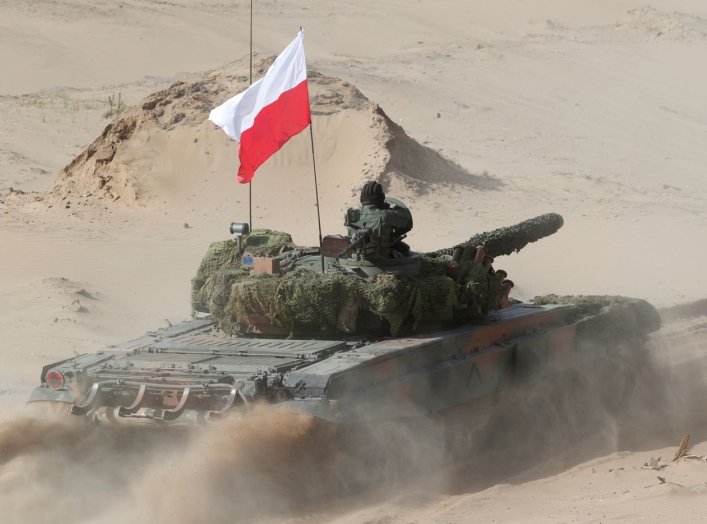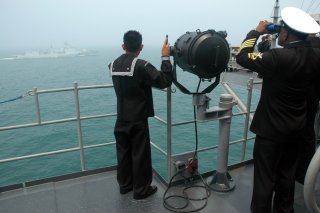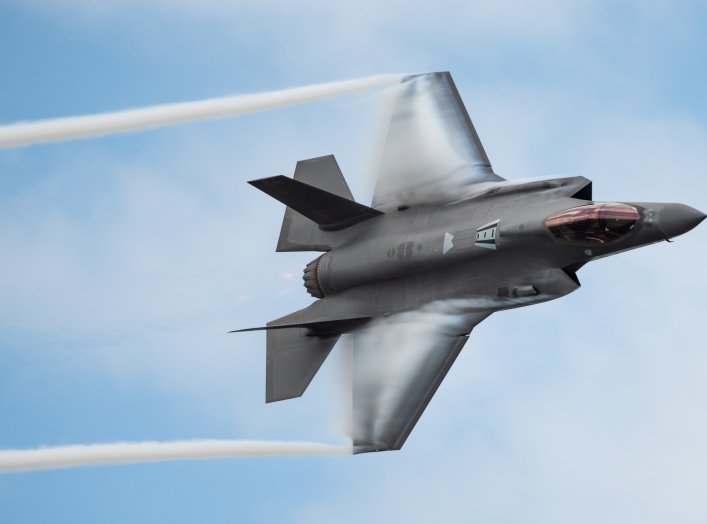The F-35 Lightning II Joint Strike Fighter is estimated to be the most expensive weapons system in human history, based on its projected lifetime cost of $1.5 trillion dollars ($406 billion for the aircraft, the rest in lifetime operating costs)—and that’s before we factor in the endless cost overruns.
One could argue there is a certain logic to this. The United States spends greater sums on the military than any other country (though some spend a greater percentage of GDP), and it has emphasized air power as its chief military instrument in recent decades. Additionally, different variants of the F-35 are prepared to equip the Air Force, Navy and Marines through most of the twenty-first century, and the type is also slated to serve in the air forces or navies of Australia, Belgium, Denmark, Israel, Italy, Japan, the Netherlands, Norway, South Korea and Turkey—with more countries likely to join the list.
However, the F-35 program has been notoriously mismanaged and perpetually over budget, and remains far behind schedule. The Pentagon was persuaded to pay for “concurrent” production of F-35s before it had been developed into a fully operational prototype; today Lockheed is shipping non-feature-complete F-35s, which will need to be expensively upgraded later when new components and systems are finally ready. Listing everything that was and continues to be wrong with the F-35 procurement process could be the subject of many articles.
But at the end of the day, however mismanaged the program may have been, does the F-35 at least amount to a decent jet fighter?
How Did the F-35 Come to Be?
Back in the 1990s, the U.S. Air Force developed the F-22 Raptor stealth fighter, which arguably still reigns as the top air-superiority fighter in service: it is fast, highly maneuverable and extremely stealthy. However, the Raptor was less optimized for ground-attack roles and deemed too expensive to build and operate to serve as a replacement of the Pentagon’s large inventory of fourth-generation fighters—so production was cut to just 180 aircraft, 120 of which serve in operational units.
The Navy and Marines also needed a new fighter, so the Pentagon committed to building a more multirole “joint” stealth fighter that would eventually replace the F-15, F-16, FA-18 and AV-8 Harriers serving in all four branches. The last time an interservice fighter-bomber was pursued, it didn’t work out, but Lockheed and Boeing both gave their best shot anyway, and the former won the competition. The JSF was supposed to a more affordable stealth fighter that could also be marketed to friendly nations, unlike the Raptor.
The trickiest requirement for the JSF was the Marine Corps’ insistence on making its version of the F-35 a jump jet. For historical reasons, the leathernecks want jets like the Harrier that can fly off smaller Marine-operated amphibious carriers or remote forward bases. However, the compromises needed to make them work leave them significantly inferior to conventional fighters. Lockheed actually acquired schematics for a prototype Russian jump jet called the Yak-41, and tried to make the most aerodynamic airframe possible.
Sniper, Not a Sword-Fighter
To cut a long story short, the additional weight and bulkier fuselage necessary to make the F-35B jump jet version left all variants of the F-35 saddled with performance thresholds that are objectively inferior to the fourth-generation fighters it is intended to replace.
The F-35 has a maximum speed of Mach 1.6, compared to Mach 2 to 2.5 for the F-16 and F-15, respectively. Its service ceiling is fifty thousand feet, compared to sixty thousand for the other models. In 2015, the Air Force tested the F-35 in a short-range dogfight with an F-16D mounting external fuel tanks, and the test pilot complained that it was simply out-turned and less energy efficient than its more agile opponent.
This critique doesn’t mean that the F-35 is a terrible plane. In one post (scroll down for English), a Norwegian F-35 pilot praises its ability to maintain high angles of attack. Nonetheless, the Lightning remains less kinematically optimized for air-to-air combat than most fourth-generation fighters.
The Air Force and Lockheed, however, insist that the F-35 isn’t meant to engage in a within-visual-range dogfight in the first place. After all, low-observable aircraft are stealthier when they are more distant from adversaries—and new beyond-visual-range missiles like the AIM-120D or British Meteor that can strike enemies up to a hundred miles away potentially allow an F-35 to sneak up on enemy aircraft and engage them with missiles without having to get close. Such a strategy is aided by the superior characteristics of U.S. Active Electronically Scanned Array radars.
In this view of things, the F-35 would act as a sort of sniper in air-to-air engagements, stalking its prey from a distance until it has a good angle for a shot, releasing its weapons and then hightailing it for home before the (possibly faster, more maneuverable) enemy has a chance to come close enough to detect it and retaliate. And if more intense air battles are anticipated, then the more specialized F-22 could take some of the heat.
No stealth fighter has ever shot down another jet in actual combat, and long-range air-to-air missiles have only been used a few times in action, so how the F-35 performs versus fourth-generation fighters depends a great deal on theory rather than operational experience. The Air Force feels this strategy has been validated by the results of repeated air combat exercises in which stealth fighters have racked up kill ratios as lopsided as 15:1 against faster, more maneuverable fourth-generation jets. And because of its low-observable characteristics, the F-35 can pick and choose when to engage and when to withdraw from a dangerous opponents in a good position.
Of course, those exercises are only good predictors of performance if they are built around correct assumptions about air warfare will work out. A big question remains, concerning how high the hit rate will be for long-range air-to-air missiles, which have seen limited use in actual combat. An estimated hit rate of 50 percent may prove optimistic. Here, F-35 doubters may point out that the Air Force overestimated the hit rate of its air-to-air missiles during the Vietnam War, resulting in disappointing kill ratios when pitted against North Vietnamese fighters in that conflict.
Critics also point out that stealth would not prevent an F-35 from being detected if an enemy got close, as stealth fighters begin to appear on X-band targeting radars once the distance is short enough. Furthermore, though optimized for minimal infrared signature, stealth fighters remain susceptible to detection by infrared-search and track (IRST) systems.
Finally, the stealth fighters can be tracked using low-bandwidth radars, which are typically found on ground-based installations. Such radars lack the resolution to engage a stealth fighter with missiles from distance, but they could be used to direct intercepts by fighters, or to stage short-range ambushes with the targeting radars of surface-to-air missile systems—the latter a technique used to down an F-117 stealth fighter over Yugoslavia in 1999.
Another tactic could be to overwhelm stealth fighters with a swarm of lower-cost jets, accepting some losses while charging into the short-range envelope the F-35 is vulnerable in—a tactic that caused the defeat of F-35s by inferior Chinese jets in a RAND Corporation simulation.
F-35 proponents, in turn, are skeptical that the ability to pull off tight maneuvers is as useful as it once was—a view in sharp contrast to that of Russian aircraft manufacturers, which continue to produce super-maneuverable jets with vector thrust engines. American air-combat doctrine emphasizes maintaining a high energy state through speed, and altitude that can be traded for speed. Pulling off extremely tight turns may help dodge a missile, but usually at the cost of so much energy that the aircraft will have little speed and altitude left to evade a follow-up attack.
Furthermore, modern short-range heat-seeking missiles like the American AIM-9X and Russian R-73 can target hostile aircraft through a helmet-mounted sight without needing to point the aircraft’s nose at a target (though doing so still confers additional momentum, of course). Such missiles are believed to have hit probabilities as high as 80 percent, quite possibly making short-range dogfighting agility a moot issue—though an F-35 configured for stealth can’t carry any AIM-9s.
Insufficient Payload and Range?
There’s another issue in play: can the F-35 carry a worthwhile payload? If a Lightning is to remain stealthy, it cannot carry external weapons, limiting it to just four (or, eventually, six) missiles carried in a stealthy internal-weapons bay, plus a twenty-five-millimeter cannon. This does not compare favorably to the eight to ten hardpoints on most fourth-generation fighters. This issue is even more salient when considering the F-35’s ground-attack capabilities in stealth mode, amounting to 5,700 pounds of internal stores, leaving them at a deficit compared to the roughly fifteen thousand pounds or more of external stores that can be carried on U.S. fourth-generation aircraft.
To be fair, Lockheed has advertised a nonstealthy “beast mode” configuration of the F-35 with sixteen wing-mounted bombs and missiles, allowing a full twenty-two-thousand-pounds payload. However, this configuration remains only hypothetical.
Payload brings us to the matter of range. Once again, the F-35 cannot rely upon externally-mounted fuel tanks if it wishes to retain its stealthy radar cross-section. In compensation, the Lightning has longer range on purely internal fuel than most fourth-generation fighters. Unfortunately, this still means that both land- and carrier-based F-35s will need to be based within range of intermediate-range ballistic missiles (IRBMs) that are quite capable of devastating airbases or sinking carriers. Mid-air refueling could help with this problem, but tanker aircraft too may be vulnerable to attack, unless the Navy chooses to acquire a stealthy tanker drone.
The Pentagon remains optimistic about the F-35’s ground-attack capabilities for a simple reason: they believe the F-35 will give it a convenient tool for penetrating increasingly deadly integrated air-defense systems without having to put together a huge strike package, including jamming planes, Wild Weasel anti-SAM aircraft, escort fighters and so forth. As discussed above, F-35s wouldn’t be invulnerable to ground-based air defenses, but they would have an easier time slipping past and dismantling ground-based missile batteries with fewer support planes put at risk.
New Paradigm of Networked Warfare
F-35 proponents also emphasize that the F-35 is designed around new digital technology to an unprecedented level. It has sophisticated sensors that not only soak up copious data from the surrounding environment, but then funnel it back for use by friendly forces via high-capacity datalinks. F-35 pilots use state-of-the-art helmets that allow them to “see through” their own aircraft (which is good, as the canopy on the F-35 has poor visibility to the rear). The F-35’s mission systems computer is designed to automatically download mission parameters, while its logistics computer can offload status reports for technicians through a proprietary encrypted system.
Thus, in the F-35, the futurists of the Pentagon envision a new networked way of war, wherein each fighter will serve as much as a sensor node for a larger war machine as it does as a distinct weapons platform.
Of the course, the flipside of seeing the F-35 as the apotheosis of a networked paradigm is that it may be more vulnerable to hacking attacks and other electronic warfare systems than any warplane before, potentially allowing for a Battlestar Galactica scenario in which a digital surprise attack leaves many of the stealth fighters compromised. Particularly unpromising is that Chinese hackers apparently broken into Lockheed’s computers twice and acquired F-35 blueprints—which may explain why China’s J-31 Gyrfalcon stealth fighter bears more than a passing resemblance to the American stealth jet.
All in all, the F-35’s rising costs and mounting delays towards achieving full operational capability have caused the Pentagon to appreciably begin downsizing or delaying F-35 orders in the near term, and advance plans on keeping the older F-15, F-16s and FA-18 in service into the 2040s. For example, the Navy now plans on phasing in two squadrons of F-35s on its carriers alongside three squadrons of FA-18 Super Hornets. One can imagine a similar force mix of F-35s cooperating with F-15s, -16s and -22s.
Rather than fully replacing the last generation of jets, the F-35 may best fit in as a complement to them by undertaking missions that take maximum advantage of its stealth characteristics and networked sensors. For example, F-35s could range ahead and ferret out the location of enemy fighters, radars and missile batteries. Then the data they gather could then be used to coordinate intercepts and attack runs by more heavily armed Eagle or Super Hornet fighters following in their wake, or even guide their missiles to their targets.
The F-35 program has long been criticized as too big to fail, and that may in fact be true given the enormous resources already sunk into it. The Pentagon, and many other countries, are betting that the new (promising but not combat-tested) air-warfare paradigm will limit the impact of its shortcomings. However, due to mounting expenses, continual delays and breakdowns, and high operating costs, the Lightning is likely to serve alongside its predecessors for a long time to come.










